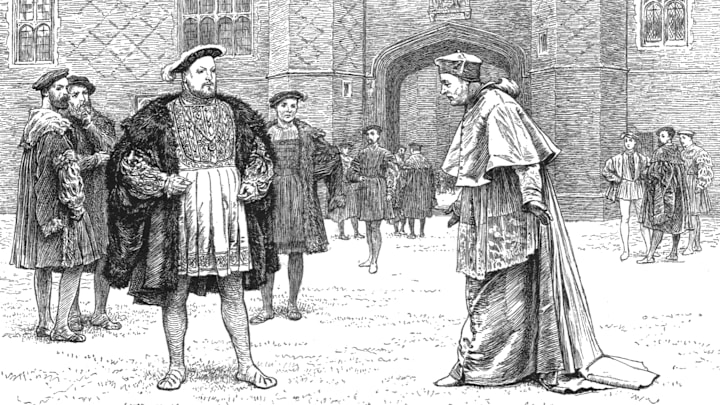In King Henry VIII of England’s pleasure palace, Hampton Court, there was no escaping class—not even in the loo.
The king, of course, had a luxurious place to squat. According to the Hampton Court Palace website, he and other royals sat atop a padded chair “covered in sheepskin, black velvet, and ribbons,” lofted above a pewter chamber pot.
This toilet was private, located in a so-called “stool room” that was attended to by a high-ranking courtier known as the Groom of the Stool. It was a privileged, well-respected gig, akin to being a bathroom attendant, but focused on handling the monarch’s waste. (Apparently the groom would even take notes on the sovereign’s movements. In 1539, Henry VIII's groom showed a flair for euphemisms by writing that the king had taken laxatives and experienced “a very fair siege.”)
- How did courtiers and servants go to the bathroom?
- How did Henry VIII and his courtiers deal with it?
How did courtiers and servants go to the bathroom?
Down a social peg, Henry VIII’s highest-esteemed courtiers weren’t nearly as coddled as their king, but they were still lucky enough to have their own private chambers—and, therefore, their own chamber pots. The same, however, could not be said for Hampton Court’s many servants.
The smelly truth is that Hampton Court was not well equipped to serve the bodily needs of hundreds of servants. During the king’s boisterous banquets, busy servants regularly heeded nature’s call by relieving themselves in hidden hallway corridors and on sizzling fireplaces.
In the kitchen, the boys assigned to turning the spit were commonly found “interlarding their own grease to help the drippings.” The walls reeked of urine so badly that, according to historian Lucy Worsley in her book If Walls Could Talk, “the palace management would have crosses chalked onto the walls in the hope that people would be reluctant to desecrate a religious symbol.”
How did Henry VIII and his courtiers deal with it?
To fix the problem, King Henry VIII constructed a giant toilet block by the River Thames called the Great House of Easement. (The king was no slouch at deploying the occasional euphemism either.) The toilet had two levels and could seat 28 people at one time.
As a common space, it had no stalls and no walls and greatly resembled the other public toilets in England, which were basically glorified benches with holes cut through them. (In London, there was an impressive 128-seater called Whittington’s Longhouse, which was divided into two sections for men and women.)
The only thing arguably worse than using the Great House of Easement was cleaning it. The communal privy led to a tank that, after the king’s festivities, had to be scrubbed by a group of king-appointed boys, known as Gong Scourers. In 1995, Simon Thurley—then-curator of Historic Royal Palaces—told The Independent, “After the court had been here for four weeks, the brick chambers would fill head-high.”
Cleaning your home’s toilet doesn’t seem like such a chore, now does it?
Read More About the Tudors:
A version of this story was originally published in 2018 and has been updated for 2025.
